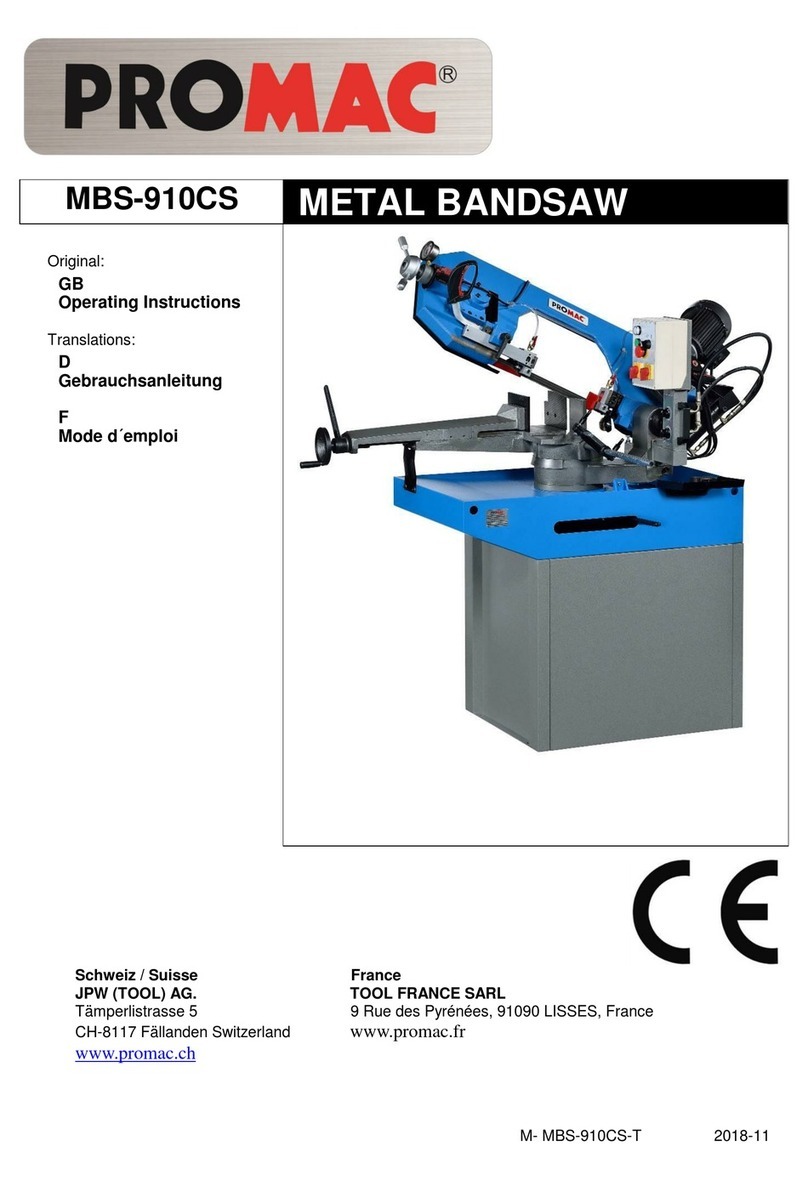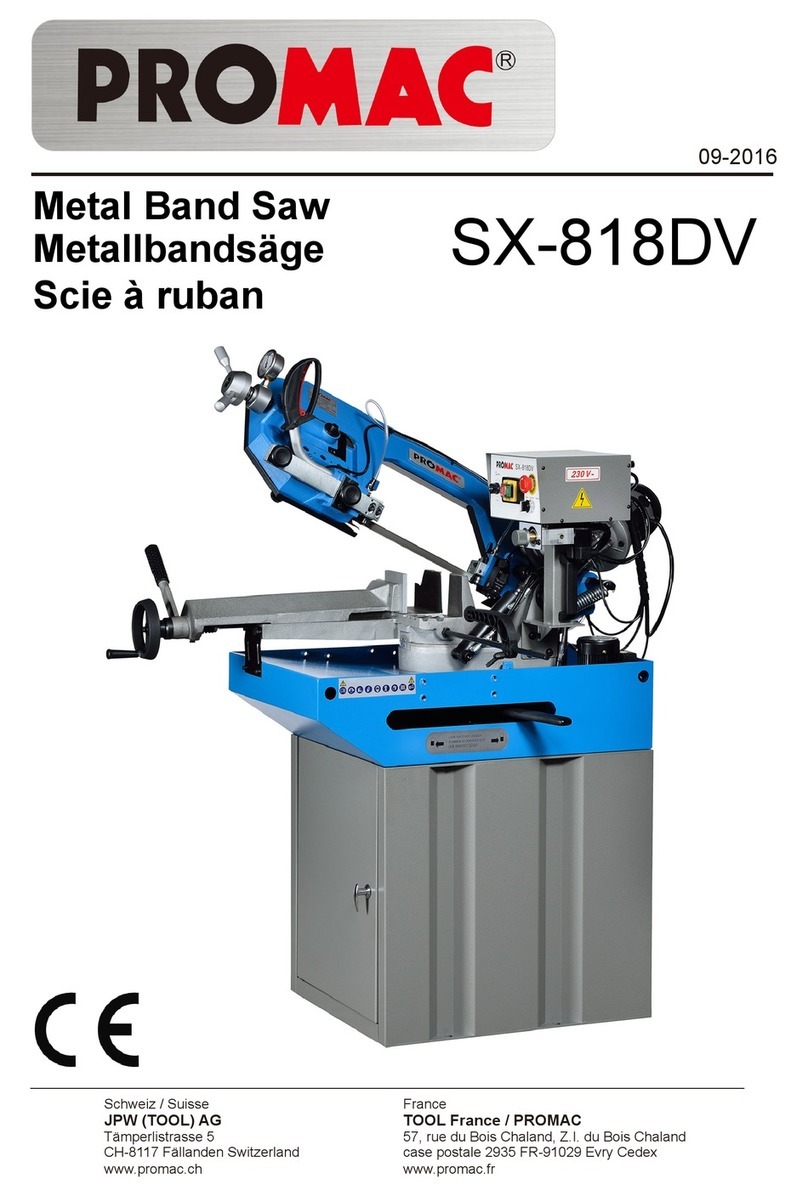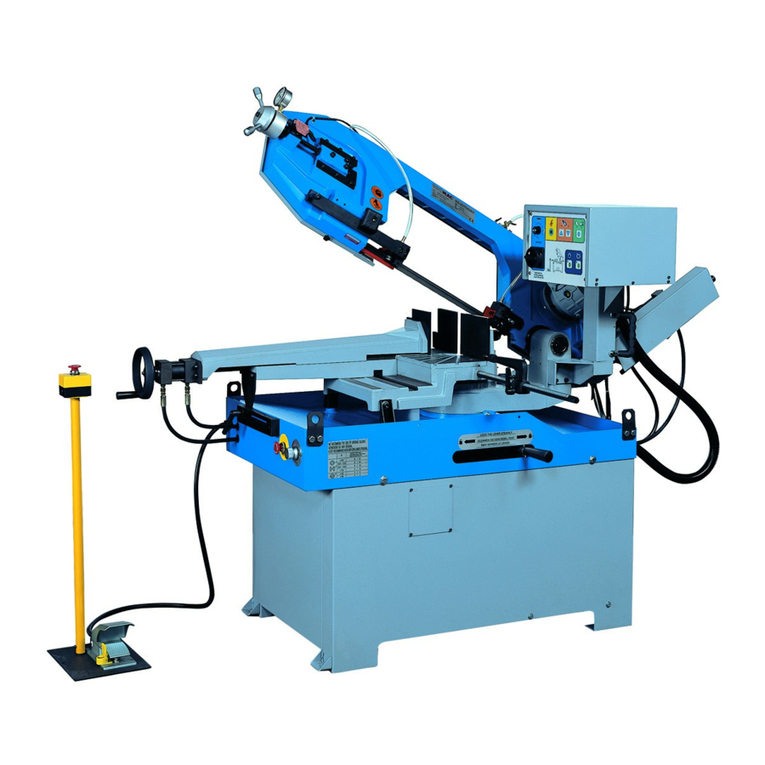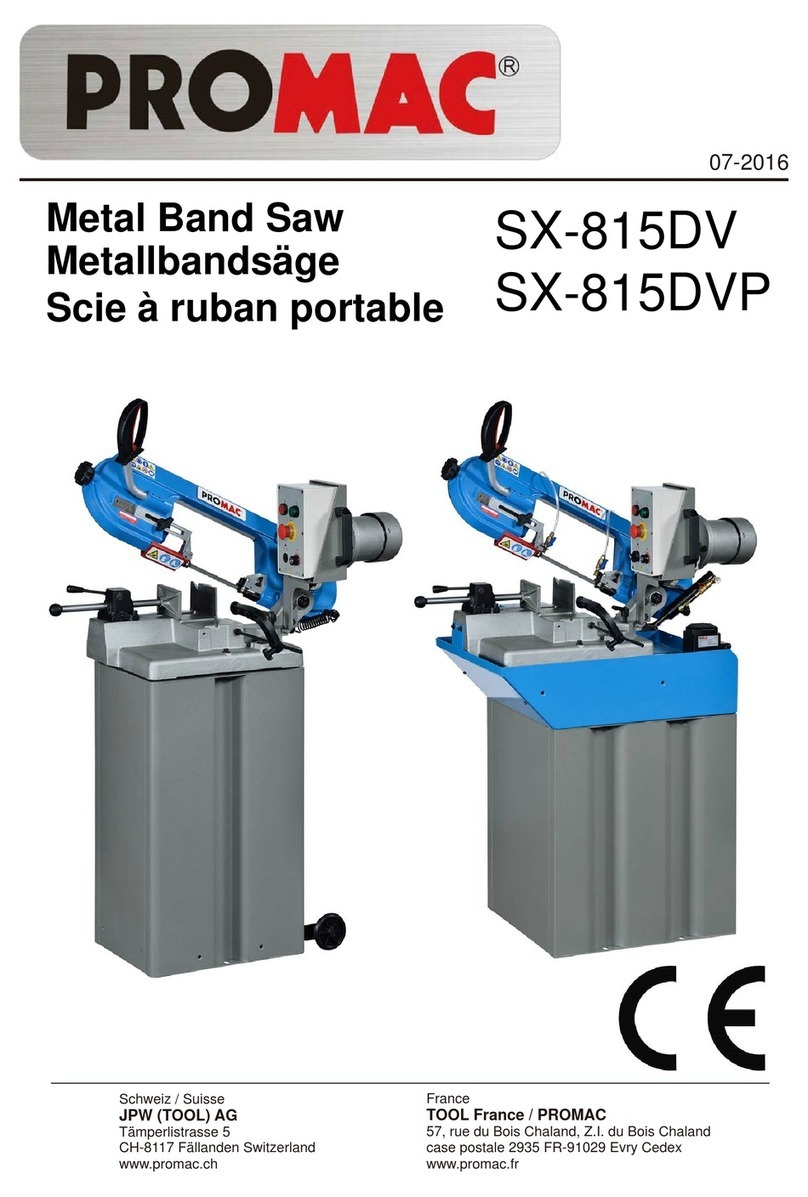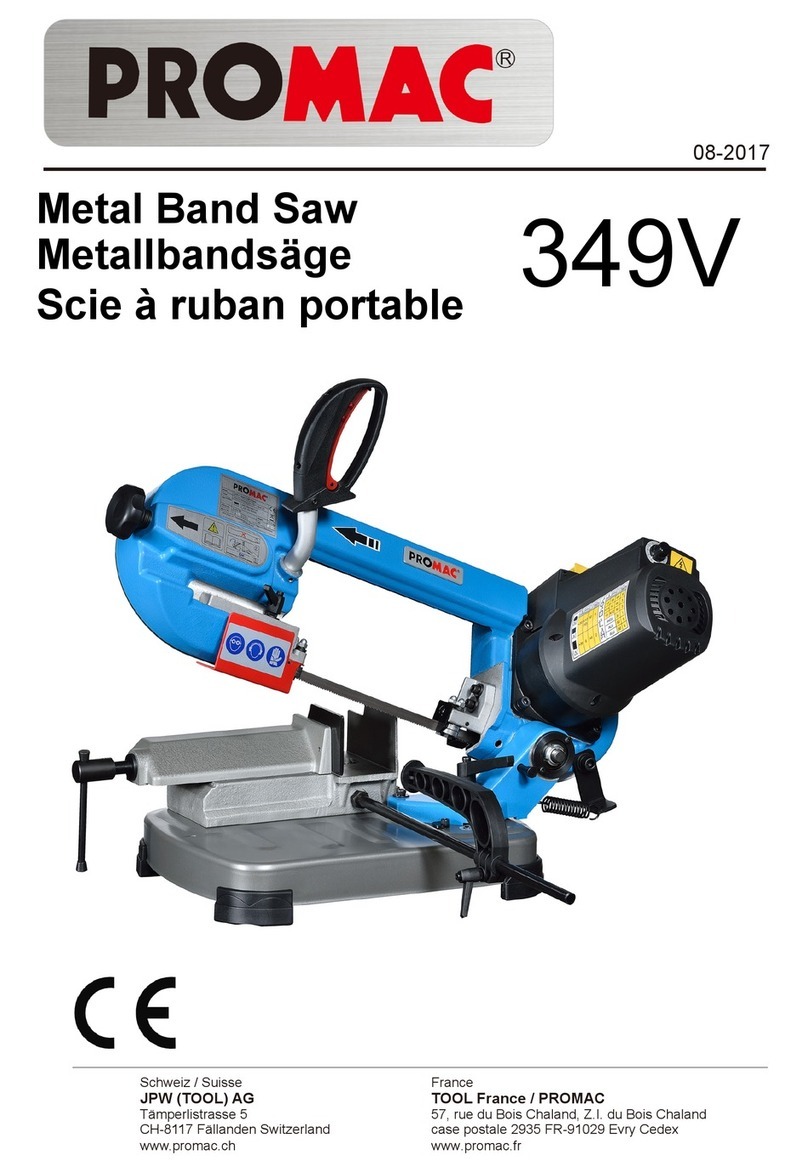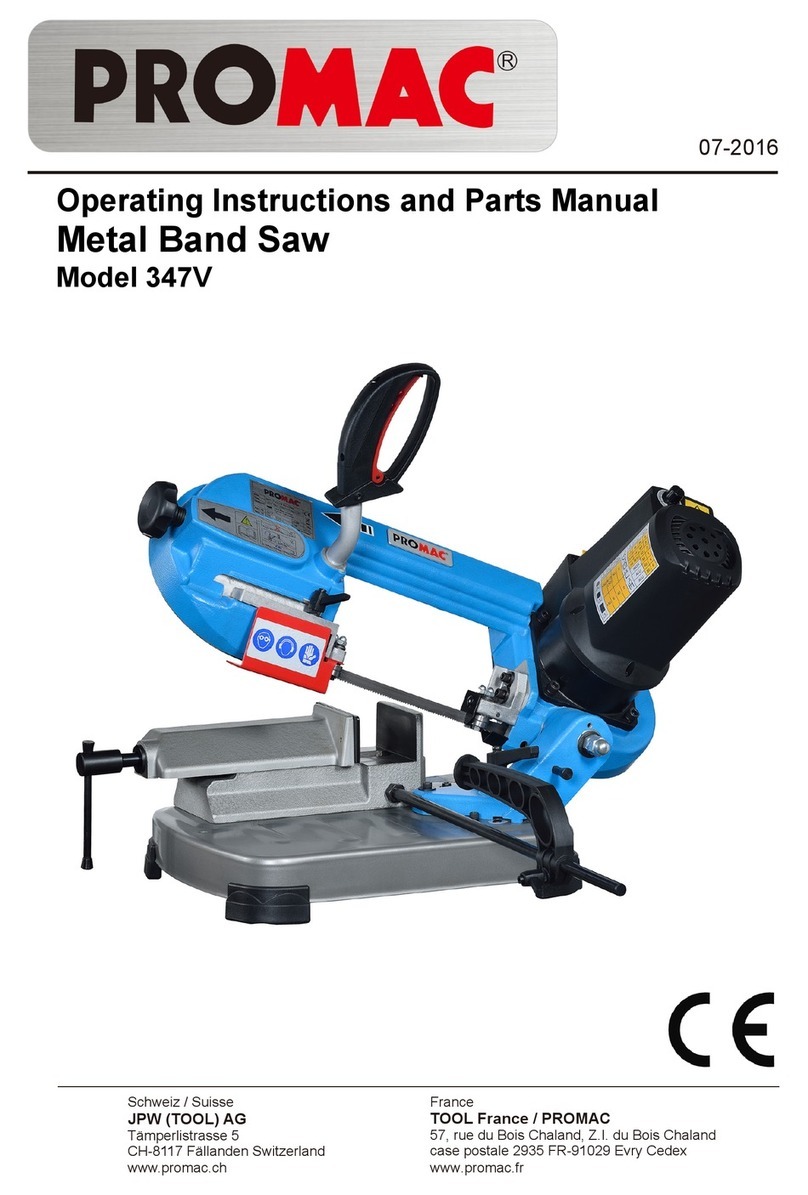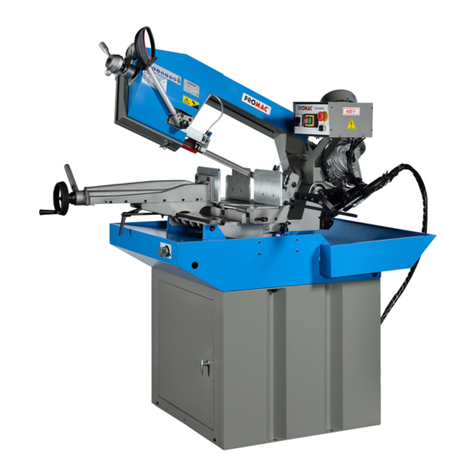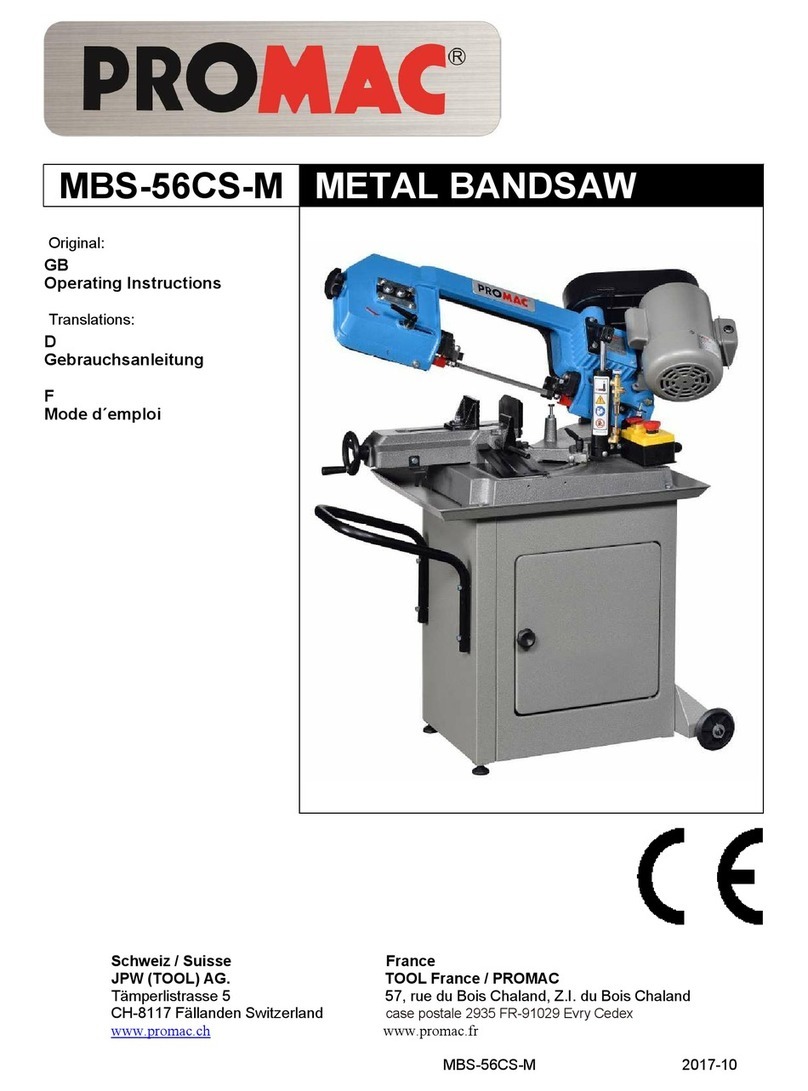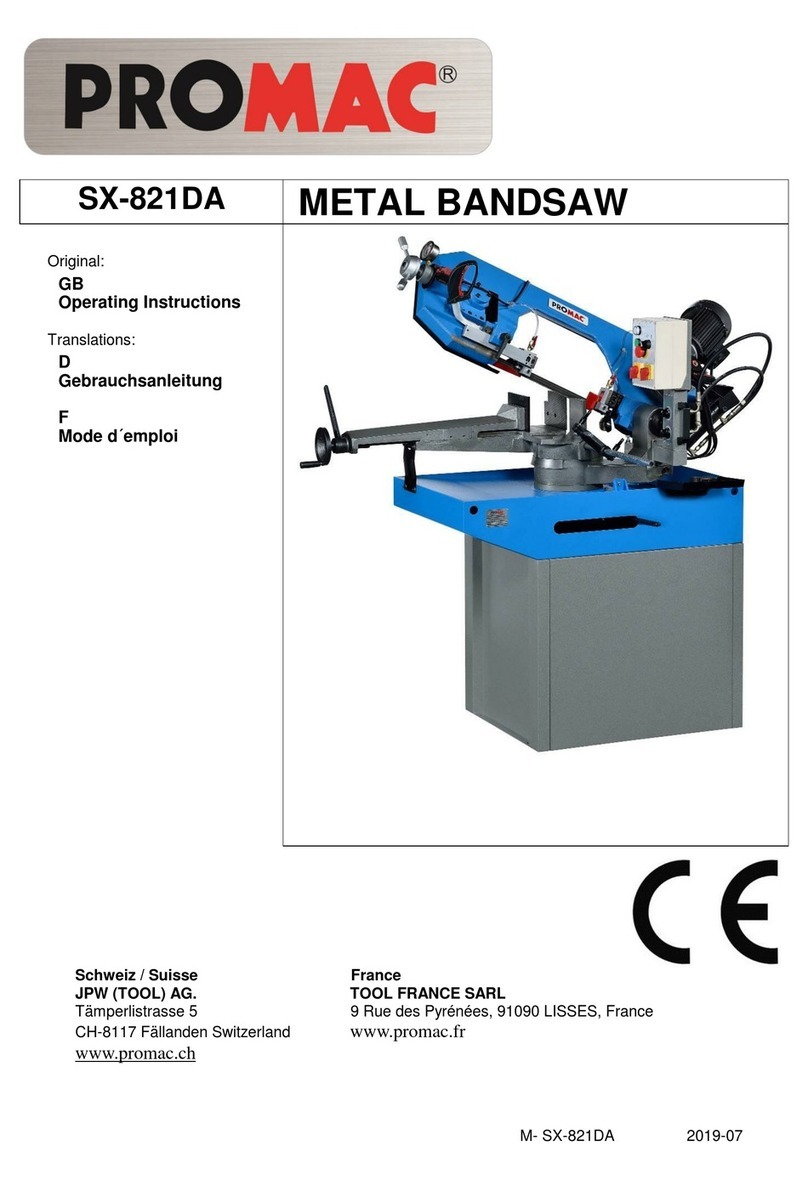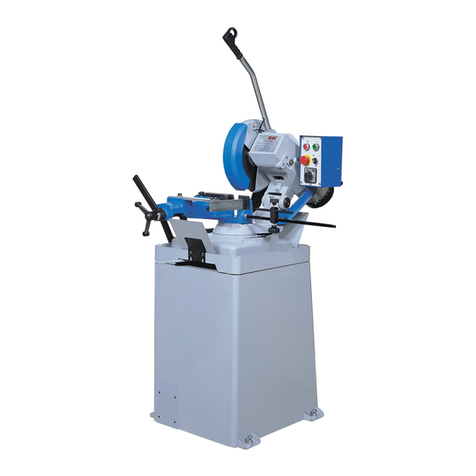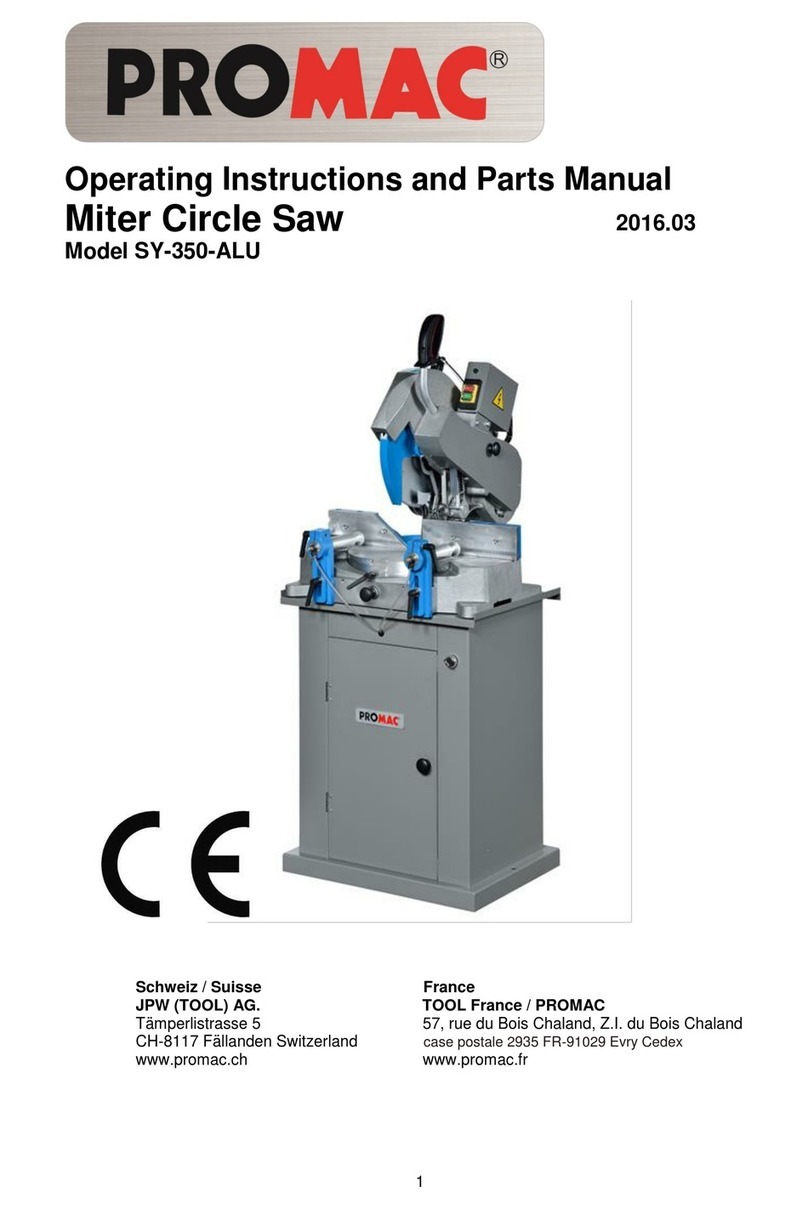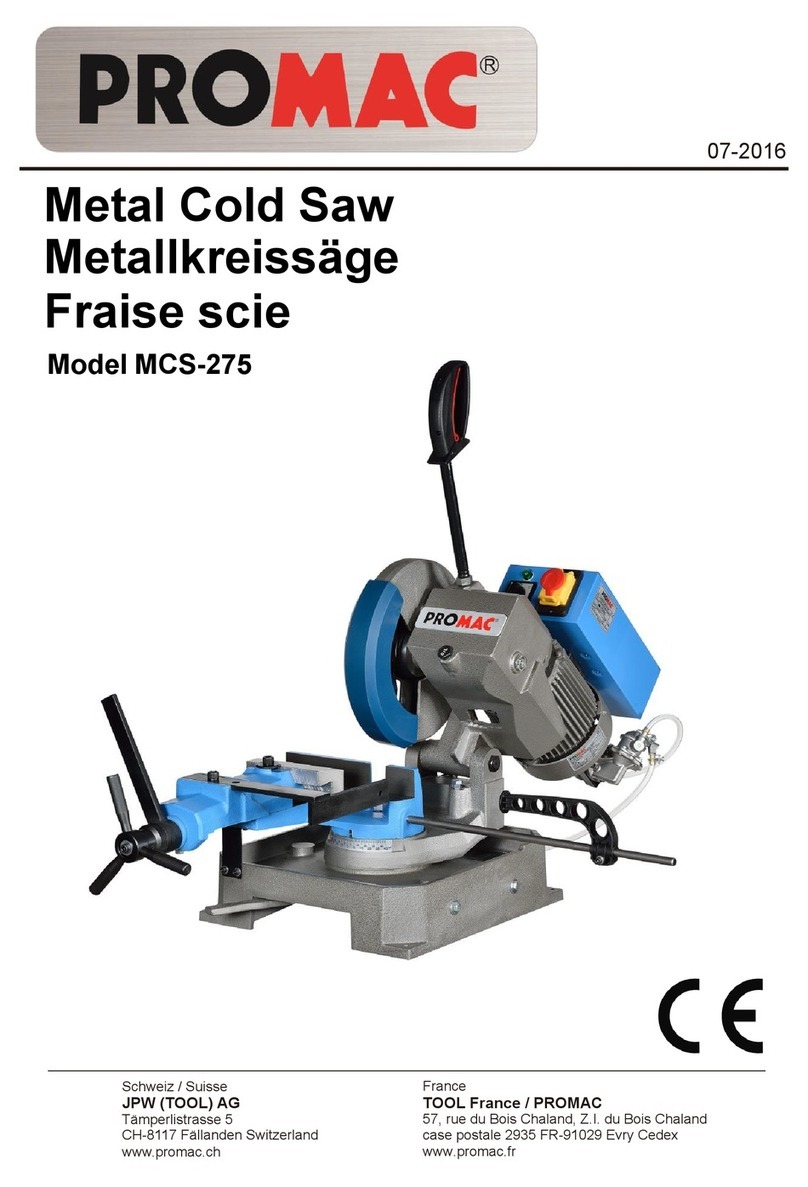
Wartung
Nachstehend sind die wichtigsten Wartungseingriffe
angeführt, die in tägliche, wöchentliche, monatliche
und halbjährliche Eingriffe unterteilt werden können.
Die Nichteinhaltung der vorgesehenen Arbeiten be-
dingt einen vorzeitigen Verschleiss und geringere
Leistung der Maschine.
Tägliche Wartung
-Allgemeine Reinigung der Maschine von angefal-
lenen Spänen.
-Kontrolle des Sägebandesverschleisses.
-Anheben des Kopfes nach oben, um ein Erlahmen
der Rücklauffeder zu vermeiden.
-Funktionalität der Schutzabdeckungen und Not-
falltasten kontrollieren.
Wöchentliche Wartung
-Allgemeine, sorgfältige Reinigung der Maschine
von angefallenen Spänen und insbesondere des
Schmier- und Kühlmittelbehälters.
-Reinigung und Schmierung der Zugschraube und
der Gleitbahnführungen des Spannstockes und
der Bandführungsarme.
-Reinigung des Sägebandsitzes.
-Schärfung der Zähne.
-Schutzabdeckungen und Notfalltasten auf Funk-
tionalität und allfällige Defekte kontrollieren.
Monatliche Reinigung
-Alle Schrauben nachziehen.
-Schutzabdeckungen auf ihre Integrität kontrollie-
ren.
-Bolzen des Armscharniers schmieren.
Halbjährliche Wartung
Schmierung des Getriebezahnrades
Das Zahnrad des Antriebsgeriebe ist aus einem
Spezialstahl hergestellt, welches einen langen
Einsatz der PROMAC-Maschine gewährleistet.
Wir empfehlen dieses Zahnrad alle 100 Betriebs-
stunden zu schmieren, um eine lange Lebensdau-
er des Getriebes zu erreichen. Diese Wartung ist
folgend vorzunehmen:
1. Maschine vom Stromnetz trennen.
2. Die Sägebandabdeckung und das Sägeband
entfernen.
3. Die Radschraube (A) Fig. 8 entferen.
4. Das Bandrad entfernen und das Zahnrad mit
einem zähflüssigem hochwertigem Fett (BLASO-
LUBE 304 oder ähnliches) schmieren.
5. Bandrad wieder montieren und die Radschraube
(A) festziehen.
6. Alle Abdeckungen und Schutzvorrichtungen wie-
der montieren.
10
AUSSERORDENTLICHE WARTUNG
Die ausserordentliche Wartungen sind von Fachperso-
nal durchführen zu lassen. Es empfiehlt sich auf jedem
Fall, sich an Ihren Maschinen-händler zu wenden.
Als ausserordentliche Wartung ist auch die
Wiederherstellung der Schutzabdeckungen und Si-
cherheitsvorrichtungen anzusehen.
AUSSERBETRIEBSETZUNG
Wenn die Sägemaschine längere Zeit nicht ver-
wendet wird, empfiehlt es sich
-den elektrischen Netzstecker zu ziehen.
-den Kühlmittelbehälter zu leeren.
-die Maschine sorgfältig zu reinigen und ausrei-
chend zu konservieren.
-falls erforderlich, die Maschine mit einer Plane
zudecken.
ENTSORGUNG
Allgemeine Vorschriften
Bei der endgültigen Abrüstung und Verschrottung
der Maschine muss derArt und der Zusammenset-
zung der zu entsorgenden Materialien Rechnung
getragen werden. Dies bedeutet im Einzelnen:
-Eisenhaltige Materialien und Gusseisen, die
allerdings immer nur aus Metall bestehen, bei
welchem es sich um einen sekundären Rohstoff
handelt, müssen, vorbehaltlich der Vergütung der
enthaltenen Bestandteile, den zur Einschmelzung
ermächtigten Eisenwerken übergeben werden.
-Die elektrischen Bestandteile, einschliesslich
Netzkabel und elektronisches Material, welches
als dem städtischen Müll assimilierbar eingestuft
wird,kann direkt der Verwaltung der Müllabfuhr,
übergeben werden.
-für die gebrauchte Mineral-, synthetischen oder
gemischten Oele, wasserlöslichen Oele und Fet-
te, bei welchen es sich um Spezialmüll handelt,
muss man sich zwecks Lagerung, Transport und
anschliessender Entsorgung an das Konsortium
für Gebrauchtöle wenden.
Fig. 8
